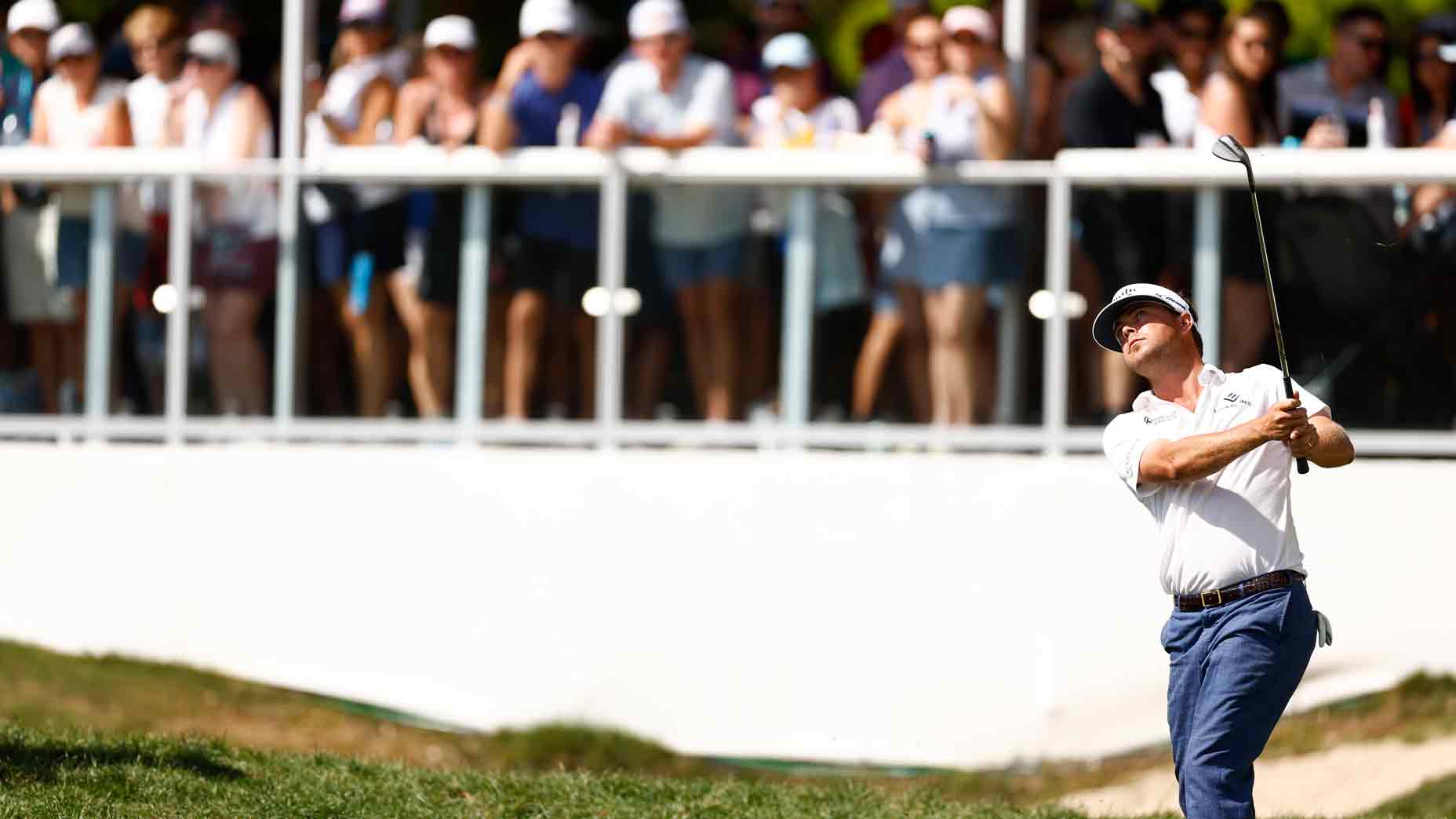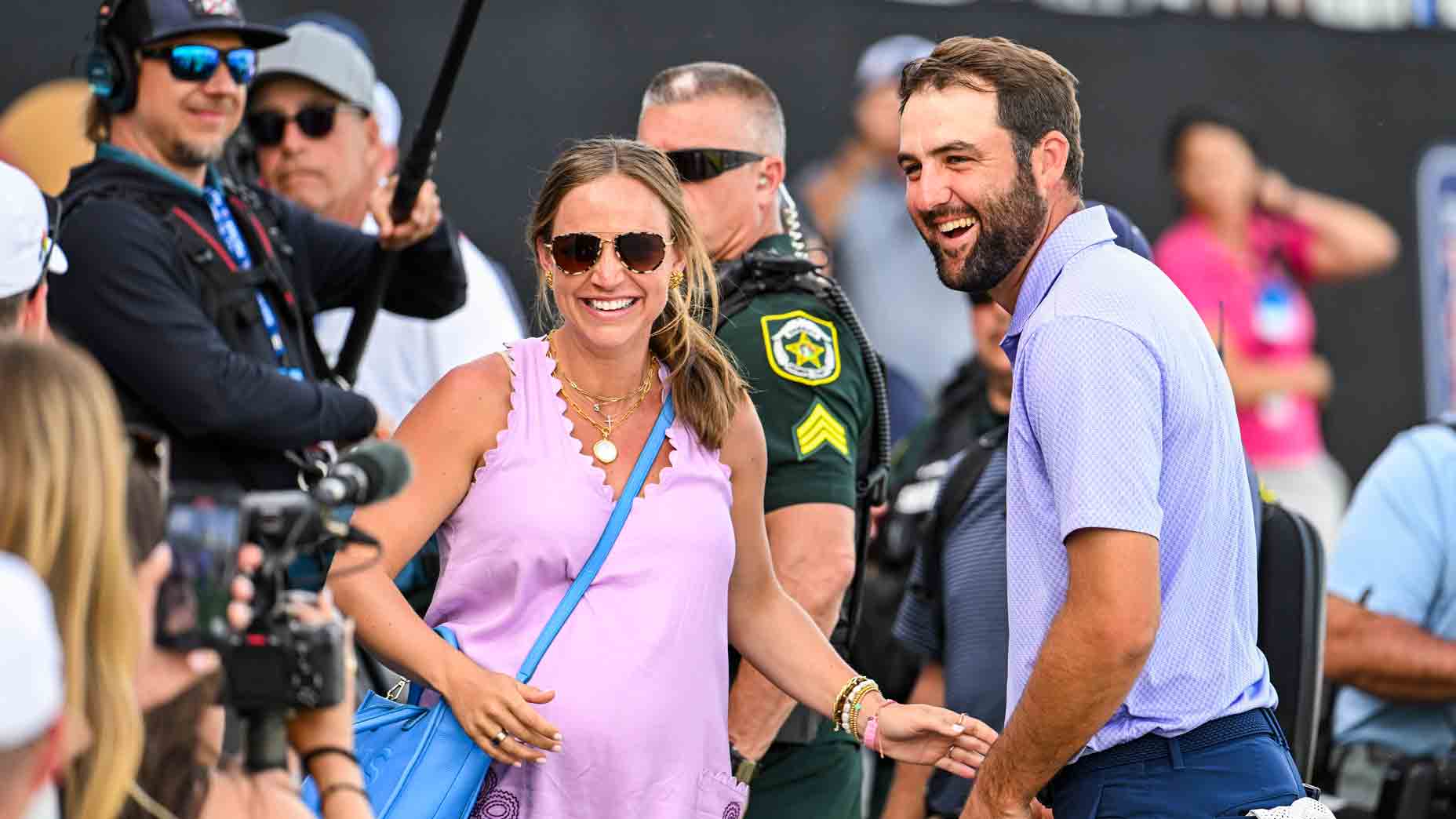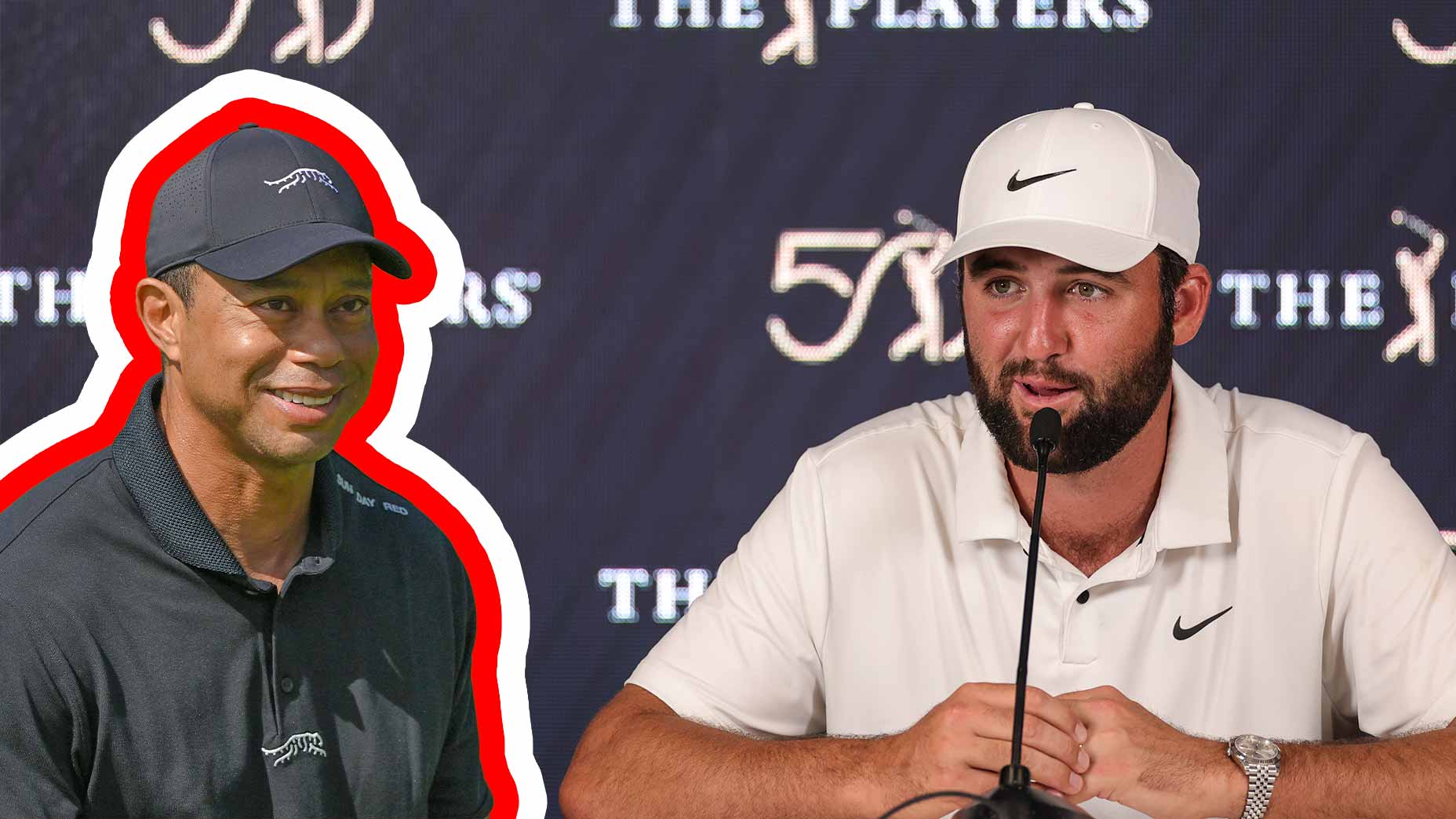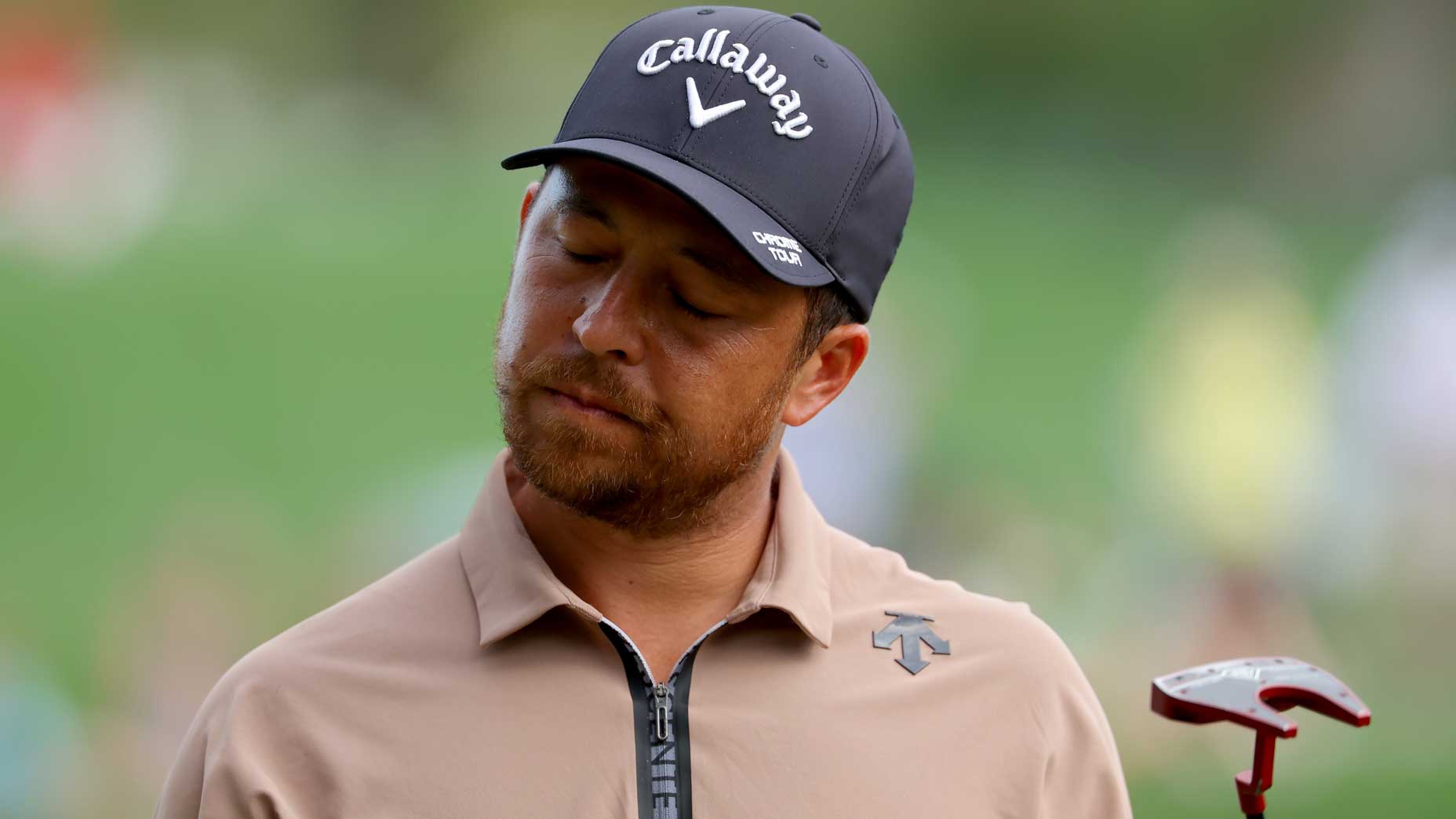8 observations from a first-timer’s walk around TPC Sawgrass
- Share on Facebook
- Share on Twitter
- Share by Email

The view from the back side of the 16th green at TPC Sawgrass.
Sean Zak
PONTE VEDRA BEACH, Fla. — For one reason or another, it never worked out. Either vacation, another assignment, or perhaps my priority rank among coworkers, but in 10 years on the job I had never covered a Players Championship in person. Never written from dateline “Ponte Vedra Beach, Fla.” But it was time to break that streak, here during the 50th anniversary of the Players’ debut. On Monday afternoon, we walked the entire property, from the 1st tee to the 18th green. Here’s what stood out along the way.
1. Gary Koch takes this stuff seriously
The former NBC broadcaster — who spent decades calling this event and uttered its three most famous words — is back in the saddle for a one-week appearance. But that doesn’t mean he’s shortchanging the gig. I found Koch all over the course Monday afternoon, analyzing the odd holes (which he’ll be calling with Mike Tirico).
He might be 71, and he might just be making a “cameo,” as he called it, but there’s always something to be learned by a new visit to this place, a bit like our annual pilgrimages to Augusta National. Koch drove his cart around for hours, stopping at every tee and every green, and crossing every fairway, charting notes in a yardage book like a caddie. It’s helpful to remind yourself of the visuals pros are actually facing while they stand over the ball.
“The one thing I’ve always marveled at here is how many holes you have to hit it one way off the tee and the opposite into the green,” Koch said. “That’s the case on the 1st hole. Then the 2nd…”
He trailed off after that, but his point was made.
2. The cutest little bunkers
Ryan Armour’s caddie Austin Gaugert gave me some good advice before I headed out on my walk. First, make sure you look up from your phone as you walk off the 17th tee. Thanks, Austin. But he also told me to pay close attention to the bunkers, especially the tinier ones.
Sawgrass has plenty of gigantic bunkers that line the hazards and wind up the side of various holes. But sprinkled throughout every hole (or so it seems) is such an array of petite traps, smaller than your dining table. They’re rarely deep, which makes splashing out of them seem pretty easy. But the difficulty comes when your ball rolls near one of their edges, because there really isn’t a collection spot low-point in the sand. Suddenly, you’re standing in the rough, playing a shot from the sand at a ball beneath your feet. It’s just awkward.


3. The course is soft … for now.
Recent weather has Sawgrass playing a bit soft right now, which isn’t exactly what we love to see. Matt Wallace zipped a downwind wedge on the 6th from pin-high in the middle to about six yards off the front. The cut of grass up the left side of 18, which occasionally catches right-to-left shots from barreling into the water, is so soft it borders on mushy beneath your feet. You wouldn’t really want to play from there, but at the very least it’s bound to keep golf balls from finding the hazard.
Most of this softness is from recent storms, but will it last? The weather is set to warm up entering the weekend, and there isn’t much for precipitation on the way. Xander Schauffele’s caddie Austin Kaiser was out analyzing the landing zones Monday afternoon, placing a golf ball at the 300-yard mark and another at around the 315-mark, which is where they’d expect tee balls to run out to.
“If it gets firm, the 1st hole will have to be 3-wood,” Kaiser said. There was a twinge of sadness in his voice when he said “will have to.” Because a firm fairway means driver might run through the short grass and into a bunker. And Team Schauffele (7th in SG: OTT) considers the driver an asset. They want to hit as many as possible.
4. Pete Dye, Master Manipulator
Walk around property and Pete Dye’s name continues to ring out, as if his ghost continues to haunt the mind of players. And caddies. While we walked up the 14th fairway, Tom Kim’s looper Paul Tesori called Dye a “master manipulator,” particularly with how he presents the hole from the tee box.
“[Hole 14] crosses you up where the tee box points you to the left, where there’s trouble,” Tesori said, noting there’s often more fairway than it seems. “And we all are inclined to think there’s safety right, but then there’s these horrible hills.”
Those horrible hills are mounds of rough out to the right of the fairway, which called to mind a story from 2008, when Tesori was on the bag for Sean O’Hair. J.B. Holmes was in their group and lighting up Sawgrass in the first round, with five birdies in his first 12 holes. On the 14th tee, Holmes bailed out right, avoiding the bunker and water that snakes up the left side, only to find himself at the base of one of those mounds. His second shot clipped the top of the mound and was diverted into the scrub left and short of the green. From there he made double bogey and finished the day at a very disappointing even par.
“The course doesn’t care who you are,” Tesori said. “It’s all about how straight can you hit me.”
5. Directionality matters
Part of what makes Muirfield in Scotland great is that its design is circular in nature. The next tee shot is always slightly different than the last, so the prevailing wind is always uncomfortable, even if it’s consistent, because it’s ever-changing in what it means to your ball flight. Sawgrass is not links golf, nor is it on the edge of the sea. But it is not far from the ocean, and we’ve seen in recent years what kind of chaotic conditions that can bring.
What I enjoyed about Sawgrass’ weaving nature, through what was once swampland, is how player have to think differently about the wind on every tee shot, particularly on the front nine. That’s what allows wind to really make an impact on their psyche, even if it’s not gusting more than 20 mph. Monday’s wind hit pros straight in the face on Hole 8, the 237-yard par-3. Scott Stallings had to muscle up a 7-wood just to reach the front part of the green. Monday’s breeze ripped off the right side of 1, where you’d like to play a cut, and off the left side of 2, where you’d like to play a draw. This is what makes a golf course that demands precision so damn difficult, even for the best in the world. They cannot get comfortable relying on a single shot shape all day long.
6. The 15th tee shot is nightmare fuel
A handful of tee shots at Sawgrass are most daunting because of the threat of water, but the 15th from the back tees is as intimidating as it gets for the single-digit handicap. We’re just confident enough in our playing abilities to think we can play anywhere, but truly never positive where the tee ball is going to start. And thus the 15th — which plays 470 yards for the pros, the first 200 of which are up a chute — is one that aptly displays the difference between those who play on Tour and those who watch.
Am declaring on the record that the 15th tee shot at Sawgrass scares the hell outta me pic.twitter.com/lmCdPjWMSN
— Sean Zak (@Sean_Zak) March 11, 2024
7. The 16th bailout can be nightmarish, too
Many course design aficionados highlight the 16th as their favorite on property. It demands a good tee shot and an even better approach, with a water hazard up the right. The tee box seems like a genuinely fun place to watch players hit driver, which is more than you can say for most par-5s.
But the real juice of this hole is the approach, which can set up an eagle putt, so long as you don’t bail out to safety up the left side. Left of the green is a closely shaved area, followed by a hill of rough that looks like a comfy pillow that can accept any overcooked draws. Only, when you play from that comfy pillow back toward the green, you’ll find a putting surface that slides away from you.
Dylan Wu (and his caddie-brother, Jeremy Wu) found this out the hard way Monday. Dylan dropped a couple balls in the rough and hacked them out toward the pin at the center of the green. His first was a bit of a screamer, destined for the water long, sending Jeremy sprinting across the green to catch it before it fell in. Dylan’s next pitch was much softer, still with tumbling spin. It rolled and rolled and rolled. Jeremy stood at the edge of the hazard, patiently waiting to see if he’d need to grab this one, too. The ball crept and crept and slide right through the sliver of rough. By the time Jeremy tried sticking a club in its way, the ball squeezed under his clubhead and disappeared into the water. One of the first (of many) Sawgrass water balls this week.
8. Jim Furyk was right, unfortunately
One of my favorite Players moments from the last few years was Jim Furyk’s decision to not take a full swing on the 18th hole during the 2019 Players. He was in contention at an astonishing 48 years old, turning back the ball-striking clock on an absolute ball-striker’s course, when his tee shot wound up right on the edge of the railroad ties left of the fairway.
WHAT WOULD YOU DO???
— Sean Zak (@Sean_Zak) March 16, 2019
(Furyk elected to take a half-swing and pitch it out.) pic.twitter.com/hiB0wZr5Xd
For years I’ve thought that Furyk made the wrong move, pitching out short and to the right instead of trying the heroic shot. That decision — which essentially took par out of play and led to a bogey — looked a lot worse the next day when Furyk finished one shot out of a playoff with Rory McIlroy. Take your full swing, I figured. If you get wet, you get wet.
But finally taking a walk along the hazard line Monday, it’s clear just how wobbly some of those boards are. There’s serious bend to them when you put any weight on the outer edges. A full swing from Furyk would have absolutely sent him into the drink, but also could have thrown him off balance enough during contact that an even worse result could arrive: a wet golfer and a submerged golf ball.
Latest In News

Sean Zak
Golf.com Editor
Sean Zak is a writer at GOLF Magazine and just published his first book, which follows his travels in Scotland during the most pivotal summer in the game’s history.









